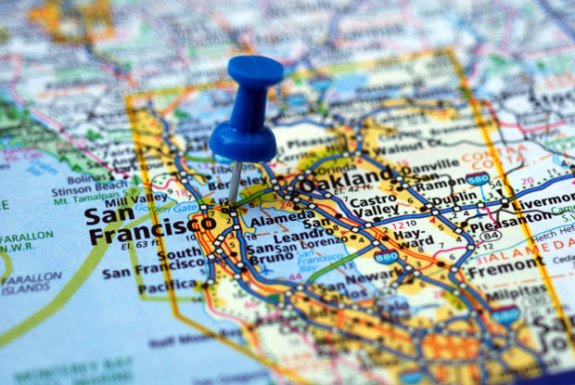Let’s imagine a hypothetical situation wherein a sniper is given a target to shoot. Well, nothing very unique in his situation, right? That’s his job. Now, the twist in the tale… Replace his sniper-weapon with a machine-gun. Interesting? Well, definitely yes. The chances of him hitting his target are automatically reduced a hundred-fold unless he is on a battle-field and doesn’t care who’s being shot down.
This exact same theory is the one that Geo-targeting works on when marketing for your business. It is the specialized internet weapon that will help you get a clear shot. It gives you a perfect aim and specifies the target perimeter unlike the machine-gun span that normal SEO provides you with.

Online presence needs to be fine-tuned all the time. You need to optimise your website in such a manner that you get higher visibility in search engine rankings. Simple SEO has to be backed by a power-plan that will help you optimise your business.
Generic SEO Vs Local SEO
Unlike the generic SEO, with geo-targeting you target customers based on country specific, province specific or merely region/city specific segregation. Local businesses need a micro- version of the generic SEO since they target the local market. Let’s see how it works:
1. When meeting expectations is all important: With an online business or even with online marketing it is important to feel the pulse of your target market. Try to understand the psyche of your prospective customers and know what exact words or phrases they use whilst searching for a product or service.
2. Use title tags freely: Once the keywords have been finalised, set about creating unique title tags for every web page. You literally have to hand-hold the search-engine and lead it to the pond so to say.
3. The city name strategy: This is where you start geo-targeting in an aggressive manner. Always add the name of your city in your title tag. Keep in mind that since it is a local market that you are targeting, adding your city name automatically reduces the parameter of your target area. Adding the city name in the meta description takes your site one notch above the rest.
4. Spotlight those keywords: Add the keywords to the content and use H1 tags to highlight them. Using an H1 tag in the headline of any web page gets visitors to linger a little longer.
5. Specific web pages: If your local business venture has sales offices across the country, do not omit creating separate web-pages for each one. Bunching them all up on one page will confuse the search engine. This will help you geo-target more specifically.
6. Show them where to find you: Add your postal address to every single web page. Since most local businesses supply or provide various products and services, create separate pages for each one. Add your contact details to every page as search engines filter based on locations too.
7. Go local: Use a local web hosting service. This helps a search engine determine the actual region and the exact location that you are targeting.
8. Opt for the best: Pick a top-level domain for your website. This helps the search engine zero in on the website’s geographical location thus increasing the traffic to your website.
9. The language matters: Have at least one comprehensive translation of a web page in the language that is spoken in that region. This helps in improving rankings as well.
Once you’ve created so many arrow boards all pointing to your business, chances are that a large percentage of the traffic will get diverted towards you. These active tips will surely help you Geo-target your audience and will add value to your business. However, it is important to keep in mind that geo-targeting is a highly specialized field and may in all probability require you to consult a professional, specializing in local SEO services for businesses, in order to be effective. But when you do approach someone for professional help, it’s best to go equipped with useful information. After all, it’s your business to know your business in-and-out, isn’t it?




